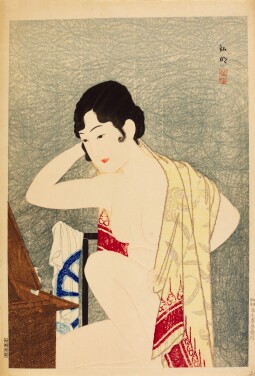F ine Japanese Prints takes place this 6–14 December offering iconic designs from the artists of the floating world.
Ukiyo-e [lit. pictures of the floating world] defines a genre of artistic output from the Edo period onwards, most often associated with the townsman, merchant class and demimonde residing in the then newly established capital of Edo. These artworks took inspiration from the 'floating world', bywords for hedonistic centres such as the Yoshiwara. The sale includes the playful Visual Parody of the Calligrapher Ono no Tofu by Harunobu along with Utamaro's okubi-e [lit. large head] portrait titled The Ide Jewel River. The most striking and renowned woodblock print Under the Wave off Kanagawa, with its remarkable place in both Japanese and Western art history, features amongst other impressions and designs from the artist. The sale culminates in an array of snow scenes and landscapes from Kawase Hasui, as well as other Shin-hanga artists.
Exhibition View
Saturday 11 December 12PM - 5PM
Sunday 12 December 12PM - 5PM
Monday 13 December 9AM - 4.30PM
Tuesday 14 December 9AM - 4.30PM
Please contact the department for further information
Auction Highlights

Under the Wave off Kanagawa, Also Known as The Great Wave
Katsushika Hokusai’s masterpiece Under the Wave off Kanagawa (the ‘Great Wave’) is as immediately striking today as it must have been when it first appeared in late 1831, when it was published as part of the set ‘Thirty-six Views of Mount Fuji’ (Fugaku sanjurokkei). The series was a sensational success at the time, proving so popular that after the completion of the first thirty-six prints of the series title an additional ten were added bringing the total of a complete set to forty-six, even though the title was not modified.
The main subject of the design, the ‘Great Wave’, towers up and crests over forming claw-like extensions which reach towards the snow-capped peak of Mount Fuji dwarfed below; the sacred mountain revealed for a moment in the well of the wave. The oarsmen of three skiffs (oshiokuri-bune) struggle against the overwhelming force of the wave as they head away from Edo to meet fishermen with fresh catches of fish to return to the capital to sell in the markets.
No other Japanese print is more internationally renowned, occupying an iconic place in modern visual culture. The perfect balance of the composition, combined with the universally understood concept of the struggle of man against the monumental forces of nature are elements that contribute to its enduring popularity.
A Collection of Fine Surimono

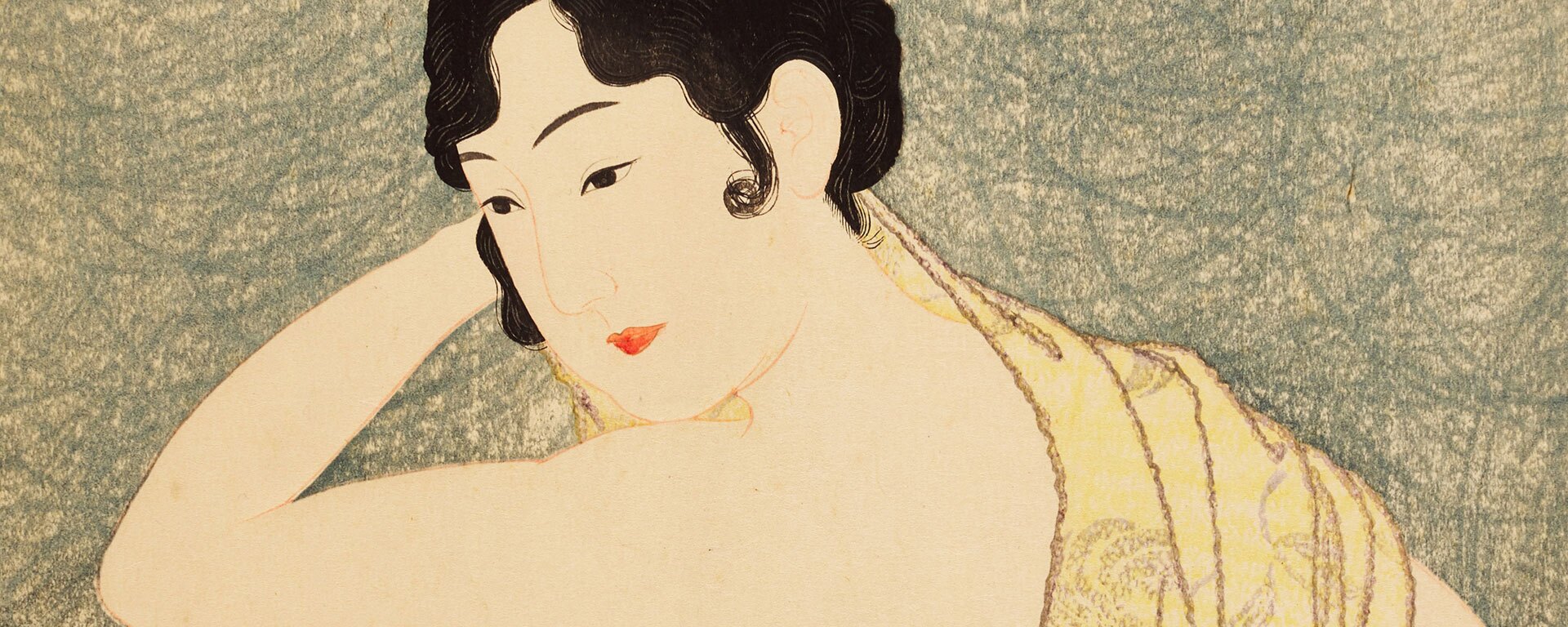
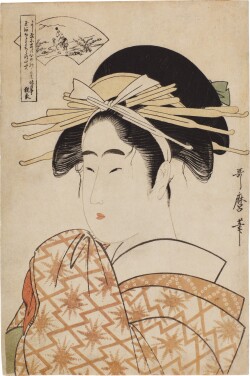











![View 1 of Lot 120: Utagawa Kuniyoshi (1797-1861) | The Former Emperor [Sutoku] from Sanuki Sends His Retainers to Rescue Tametomo (Sanuki no in kenzoku o shite Tametomo o sukuu zu) | Edo period, 19th century](https://sothebys-com.brightspotcdn.com/dims4/default/27f97e0/2147483647/strip/true/crop/2000x990+0+0/resize/330x163!/quality/90/?url=https%3A%2F%2Fsothebys-md.brightspotcdn.com%2F05%2Fc7%2Ff4288eec4906b0a0f04304fe3890%2Fl21227-c2vt8-01-group-03-t1-combined.jpg)





















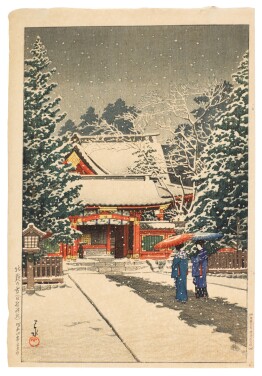
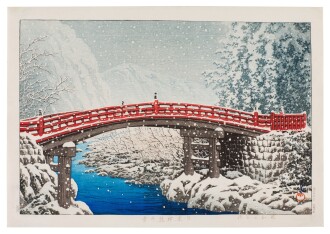






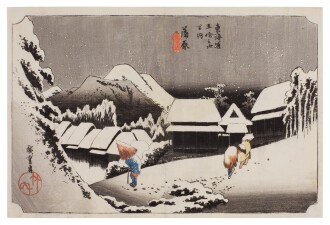

![View 1 of Lot 161: Ito Shinsui (1898-1972) | Taikyo (Before the mirror [Red geisha]) | Taisho period, early 20th century](https://sothebys-com.brightspotcdn.com/dims4/default/9168ae4/2147483647/strip/true/crop/1331x2000+0+0/resize/250x376!/quality/90/?url=https%3A%2F%2Fsothebys-md.brightspotcdn.com%2Fea%2F24%2F88e5f34c4d03ba953f753b4fefad%2Fl21227-c249b-01-t2.jpg)


